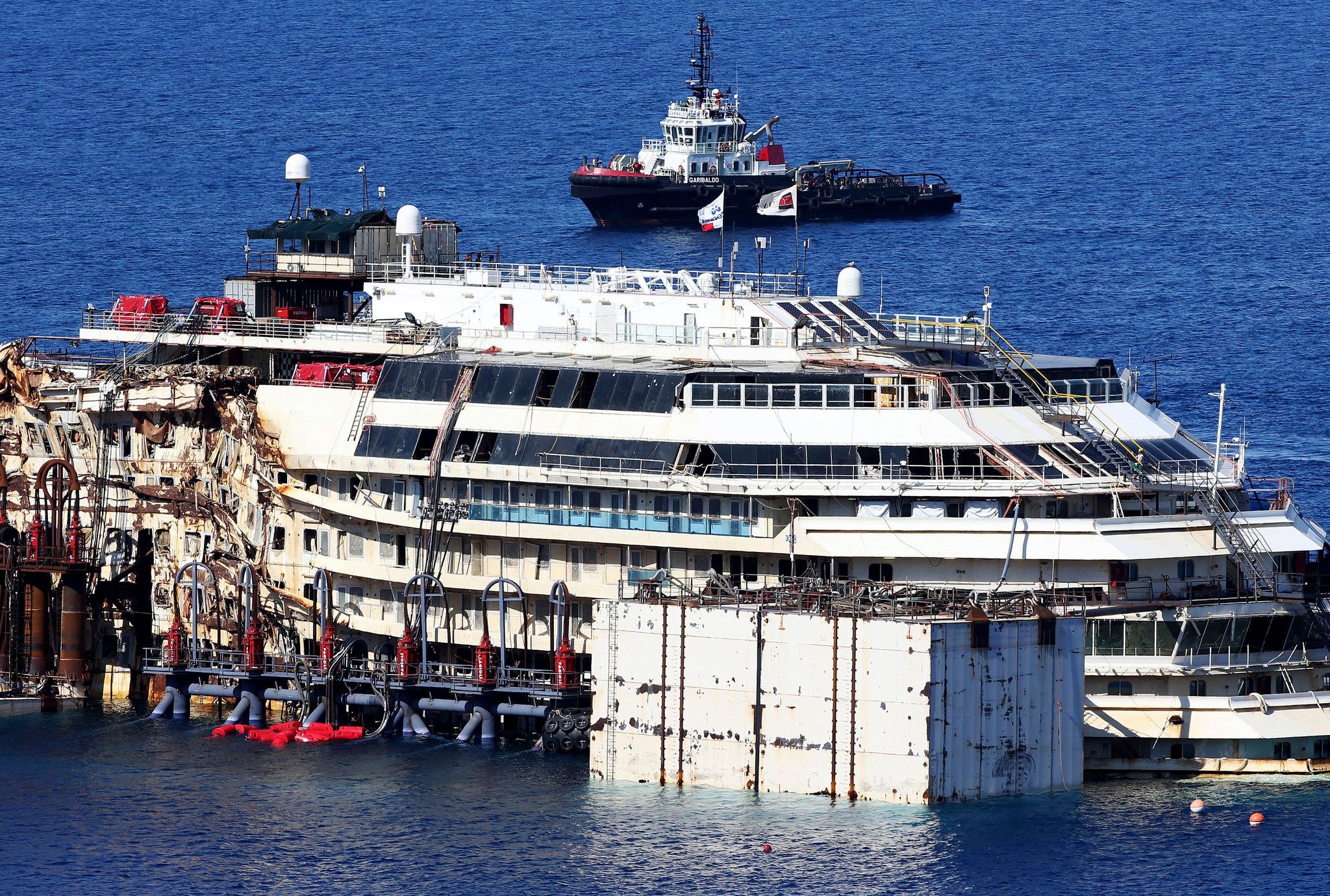Costa Concordia: Divers to search and recover final missing body, officials promise
The body of an Indian waiter will be searched for as the wreckage gets refloated and removed two and a half years after it capsized

Your support helps us to tell the story
From reproductive rights to climate change to Big Tech, The Independent is on the ground when the story is developing. Whether it's investigating the financials of Elon Musk's pro-Trump PAC or producing our latest documentary, 'The A Word', which shines a light on the American women fighting for reproductive rights, we know how important it is to parse out the facts from the messaging.
At such a critical moment in US history, we need reporters on the ground. Your donation allows us to keep sending journalists to speak to both sides of the story.
The Independent is trusted by Americans across the entire political spectrum. And unlike many other quality news outlets, we choose not to lock Americans out of our reporting and analysis with paywalls. We believe quality journalism should be available to everyone, paid for by those who can afford it.
Your support makes all the difference.Italian officials have pledged to search for the last remaining missing body within the partially submerged Costa Concordia wreckage as the salvage operation makes one final push this week.
Removal of the 290-metre vessel from the seabed will get underway today and last for several days, two-and-a-half years after it ran aground and capsized off the west coast of Italy.
Thirty-two people died in the incident, with most bodies since recovered except one – an Indian waiter.
Franco Gabrielli, from the Civil Protection Department, said it was a “great sorrow” that the final body has not yet been found.
He pledged that divers will continue to search for the last victim as the delicate operation to remove the ship begins this week.
Mr Gabrielli told reporters on the island of Giglio – off which the ship had sunk – that while the weather wasn’t optimal for the mammoth task of extracting the wreck, it was good enough to allow it to start.
The Concordia will be refloated and towed to Genoa on the mainland, where it will be used for scrap.
The cruise liner was successfully moved upright last September, with the hull currently resting on a false bed created at a depth of roughly 30 metres.
The comprehensive process of removing the ship from its current location means that an initial section of the structure will be floated first so that engineers can check for damage.
A pneumatic system will be used to pump water gradually from 30 caissons (airtight tanks) surrounding the wreck, filling them with air and pushing the vessel upwards.
Engineers will float a small section at first to check for structural damage. If the Costa Concordia cannot be moved in one piece, it will have to be dismantled where it is.
If the structure is safe, the ship will be moved 30 meters away from shore before being gradually refloated.
Each of the 13 decks will be examined as they emerge for any hazards that could seep into the ocean.
When the process is finished, a section of about 18 metres will remain submerged and the 114,500-tonne vessel will be tugged at a steady two knots to Genoa on a four-day journey over 190 nautical miles.
Michael Thamm, chief executive of Costa Cruises, said all the company’s energies were focused on the “successful conclusion of this unprecedented engineering challenge to respect a precise commitment - to remove the Concordia wreck as soon as possible, in compliance with the highest environmental and safety standards”.
Subscribe to Independent Premium to bookmark this article
Want to bookmark your favourite articles and stories to read or reference later? Start your Independent Premium subscription today.
Join our commenting forum
Join thought-provoking conversations, follow other Independent readers and see their replies
Comments